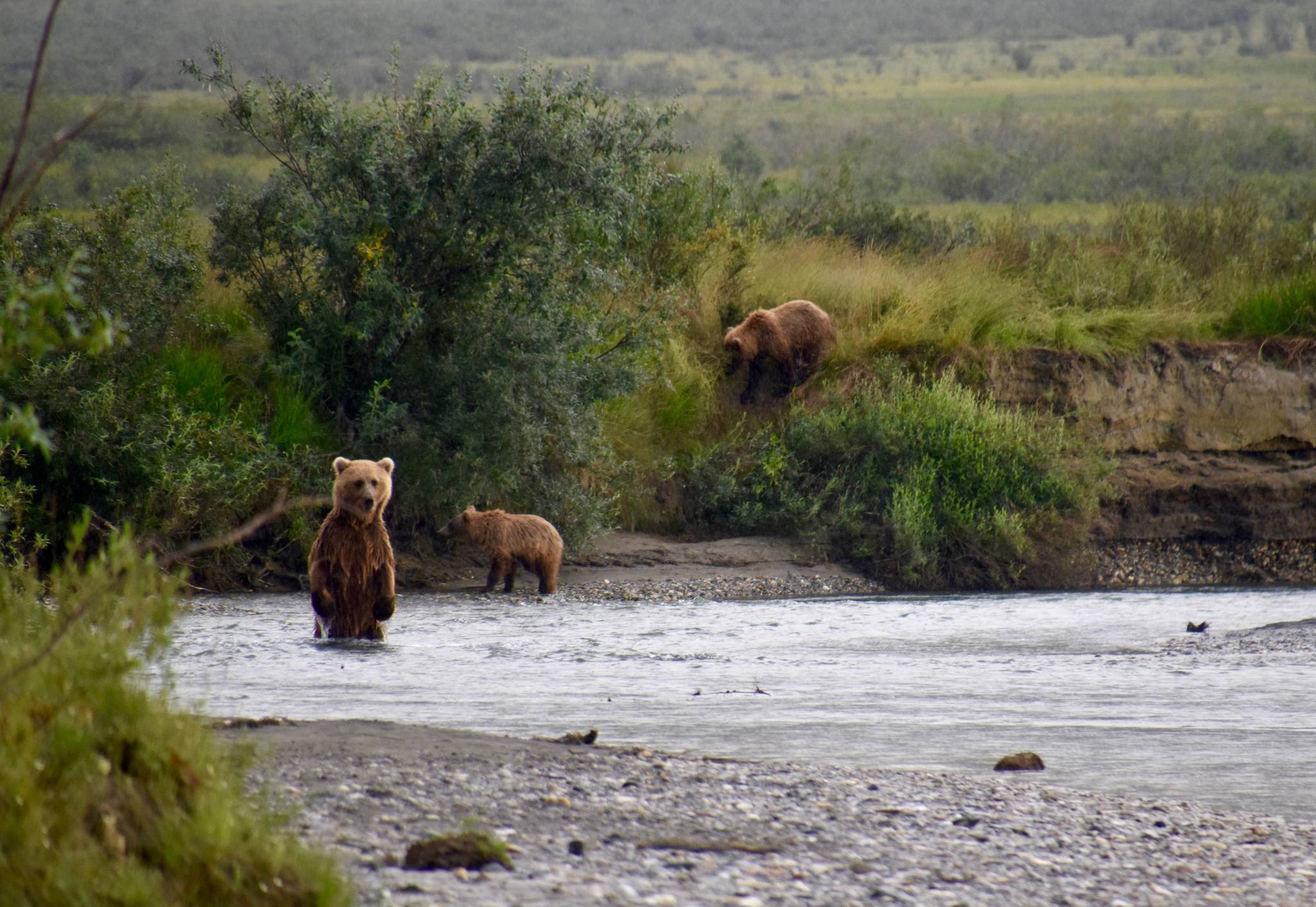By Ned Rozell
Right now, on the brushy tundra of northern Alaska, grizzly bears are gathering at quiet streams and rivers, attracted by the largest calorie reward they can find — spawning salmon.
Until recently, scientists did not know salmon swam up some of these waterways, nor that grizzlies were fattening up on them before entering hibernation.
Mathew Sorum is one of several biologists for Gates of the Arctic National Park and Preserve who tracked northern grizzly bears. He and his team found the bears were catching and eating chum salmon in places researchers had not documented as salmon streams.
[Making hay while the sun shines]
Starting in about 2008, the scientists, including Sorum’s colleagues Kyle Joly and Matt Cameron, heard from pilots who flew over the Brooks Range that they had noticed grizzly bears congregating along arctic rivers in August and September. Sorum thought that was curious, because no researcher had ever reported grizzly bear use of salmon in the central Brooks Range before those pilot reports.
The Gates of the Arctic scientists in 2014 started a study on northern grizzlies. They captured several bears and fitted them with GPS collars. The collars indeed showed that several bears were moving to tributaries of big rivers not known to host runs of salmon, in this case chum salmon.
The biologists then ground-truthed the satellite results by walking along riverbanks, as well as inflating boats and floating down rivers. On all these trips, they searched for signs of bears eating chum salmon.
They saw bears, and found the remains of salmon carcasses, and bear scat containing fish bones and gills.
How could people have missed those salmon runs that are so important for bears and other creatures?
“The headwaters of the Kobuk and Koyukuk Rivers are extremely remote and difficult to access,” Sorum said. “One stream we surveyed was a 300-mile bush-plane flight from Fairbanks. In that region it’s possible that large chum runs have occurred for years without published documentation.
“It’s also possible that climate change is expanding the northern range limit, and that the chum runs we identified are a more recent phenomenon.”
The discovery of salmon streams relied upon by northern grizzlies, which don’t have the rich food resources of grizzlies on the southern coasts (known as brown bears), is a factor to be considered for a proposed road from the Dalton Highway to the Kobuk River village of Ambler.
“We identified many areas heavily used by grizzly bears that overlap the proposed Ambler Road,” Sorum said.
That sets up a few hurdles to road development, like perhaps requiring bridges over streams instead of culverts, to allow salmon to move without restriction.
Whether recent or not, the presence of chum salmon in lonely northern streams is one of many surprises Sorum has had in his career.
“There is a lot we still don’t know or are relearning about the Arctic,” Sorum said. “I feel like I learn something new every time I go into the field.”
• Since the late 1970s, the University of Alaska Fairbanks’ Geophysical Institute has provided this column free in cooperation with the UAF research community. Ned Rozell ned.rozell@alaska.edu is a science writer for the Geophysical Institute.

